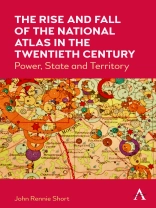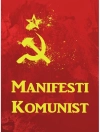The publication of the National Atlas of Finland in 1899 marks the beginning of the era of the modern national atlas. It is a period that coincides neatly with the twentieth century. The modern national atlas mirrors and embodies some of the important themes of this turbulent century, including the complex connections between nation, state and territory, the rise of state-sponsored science; the growth of nation-states; the geography of biopolitics.
Between 1900 and 2000, more than seventy countries produced a national atlas, an official or quasi-official rendering of the nation-state in maps and accompanying text. A useful working definition of a national atlas is “a generally comprehensive, officially sanctioned single-country atlas.” This book considers the reasons behind and characteristics of this state-sponsored cartographic explosion. The changing form of the national atlas provides an intriguing window into the connections between science, state, territory and power.
The primary material for this study is a close reading of thirty-seven of these national atlases from countries across the world. They represent a wide range of countries from rich to poor, progressive to regressive, and capitalist to communist. In total, these atlases provide a range of different state arrangements and national experiences.
Tabella dei contenuti
List of Figures; List of Tables; Acknowledgments; 1. Introduction, A Century of Nationalism, The Main Arguments, Structure of the Book; 2. The Early National Atlas, A Cartographic Explosion , The Early National Atlas in England and France; 3. Cartographic Anxieties and the Emergence of the Modern National Atlas, The Modern National Atlas in Latin America, From Anxieties to Certainties, Remaining Anxieties; 4. Cartographic Ruptures and the National Atlas, Cartographic Declarations of Independence, Revolutionary Ruptures, A Transect across the Ruptures; 5. National Atlas, Global Discourses, The Global Framing of the National, The Language of the Atlas: Text, The Language of the Atlas: Maps; 6. The Physical World of the National Atlas, Origins, Science, State and the National Atlas, National Imaginaries, Contested Discourses of the National Atlas; 7. The Social World of the National Atlas, Social Statistics, Statistical Atlases, Social Categories; 8. The End of the National Atlas?, Information Overload, New Technologies, National Atlas as Digital Portal, Toward a Polyphonic Participatory Atlas; Notes; Appendix: National Atlas Bibliography; Index
Circa l’autore
John Rennie Short is a professor in the School of Public Policy, University of Maryland, Baltimore County. He has published widely in a range of journals and is the author of fifty books.












